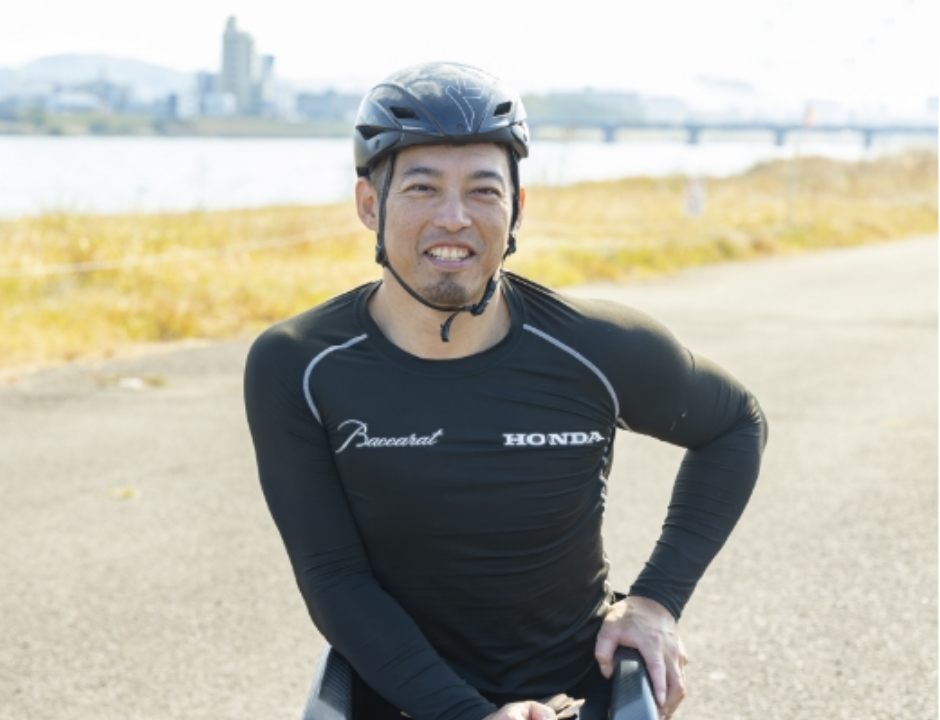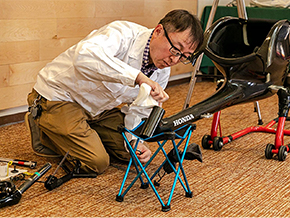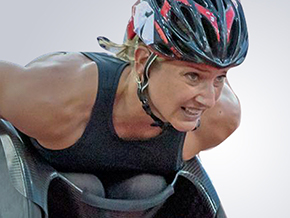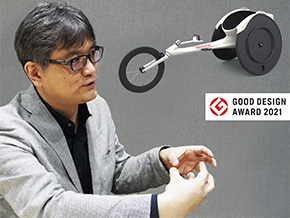- Top
- Racing Wheelchairs
- History
- Athletes
- Oita Wheelchair Marathon
- Designer Interview

Winner of the 2021 Good Design Award
Interview with the designer of
the KAKERU
racing wheelchair
Racing Wheelchairs
Ought to Be
Beautiful
We want to create with our own hands a racing wheelchair the likes of
which has never been seen before
It was driven by such an ambition that Honda started developing racing wheelchairs, working together with Honda Sun, Honda R&D Sun, Honda R&D, Yachiyo Industry, and the wheelchair racers themselves.
Honda’s first carbon monocoque racing wheelchair was completed in 2002. The KAKERU is the latest evolution of this racing wheelchair, and received the 2021 Good Design Award.
For more information on the award click here.
To mark the award, Honda presents the following special interview with Takeshi Koshiishi, lead-designer of the KAKERU. Koshiishi spoke on the design of the KAKERU, including its characteristics and concepts, the focal points of the development team, and behind-the-scenes stories.
 The KAKERU:
the latest edition of Honda’s racing wheelchair
The KAKERU:
the latest edition of Honda’s racing wheelchair
Developed to “provide athletes with the satisfaction of victory,” the KAKERU is a full-carbon racing wheelchair that incorporates numerous cutting-edge Honda technologies. Its fusion of beauty and functionality, and its integration of athlete and vehicle have been widely praised.

DESIGNER INTERVIEW
The ambition behind the design of the KAKERU racing wheelchair
—“I want to provide athletes with satisfaction”
- Takeshi Koshiishi, Design Center, Honda R&D
- Takeshi Koshiishi is involved in the design of robots such as his masterpiece, the ASIMO and a wide range of other products, including the MPP Charge & Supply concept model, and Honda’s hot air balloons. In the world of wheelchair racing, Koshiishi spearheaded the design of the world’s first-ever carbon monocoque racing wheelchair, the subsequent IDOMI, and now the KAKERU.

Our goal was to provide athletes with satisfaction,
And to increase public awareness of parasports
When developing the racing wheelchair, our underlying approach is “to maximize the potential of our athletes.” But the important questions were these: what did we want to aim for beyond that? what did we ultimately wish to achieve by maximizing the potential of these athletes? After careful consideration, we came up with the design concept of “providing athletes with the satisfaction of victory.”
Above all, we wished to create a vehicle that athletes wanted to race on, that stirred their competitive spirit, that enabled them to fully realize their potential and to finish their races feeling satisfied. We wanted these athletes to be admired by others and to inspire dreams; we wanted them to foment excitement, and to increased public awareness of parasports. These were the goals of our project.
Wheelchair racing is a sport in which the desire for victory must be channeled through the athletes’ arms alone. Honda’s corporate slogan is “The Power of Dreams”—this slogan is personified by wheelchair racers. If we can make even a single athlete think “I want to race on this wheelchair,” then I believe that our project will have been a success.


The “wing frame”: a
breakthrough in athlete and vehicle integration
Both ASIMO, which I designed, and racing wheelchairs incorporate a mass of technologies—and both are similar in the sense that they are human-centric representations of Honda Design: we designed ASIMO to be a familiar and friendly presence around humans; we are designing racing wheelchairs to become one with athletes when racing. In addition to elevating the basic performance of these products, during the design process, we thought carefully about how we wanted people to react to them.
The design of the KAKERU is distinctive for its built-in damper steering. Previously, it was normal for racing wheelchairs to feature external steering parts; however, we housed these parts within the flowing form of the frame.
We developed the wing frame following advice from a former F1 designer. It retains the light weight and high rigidity of the sophisticated previous model; however, it delivers superior aerodynamic performance and inspires greater competitive spirit in athletes than ever before. Since we knew the KAKERU would be used by many athletes, we adopted a customizable design that could cater to the various racing positions demanded by diverse body types and disabilities. We considered all manner of layouts, overcame repeated failures, incorporated harsh feedback from athlete test-rides, and finally perfected the product.



Design = technology
Racing wheelchairs are designed using 3D data. We run simulations on numerous design proposals, continually refining them—it is an iterative process of identifying flaws, refining the design, then identifying new flaws. A racing wheelchair is not a product that I myself can ride and break records with; indeed, one of the difficulties of wheelchair design is that the only way to make progress is to combine athlete feedback with our own conjectures.
We did not, however, need to make compromises between design and technology. When it comes to racing wheelchair development, design and technology are one and the same—the more we seek to improve its functionality, the more beautiful it becomes; likewise, the more we seek to improve its design, the better its performance. There is no point in creating a beautiful wheelchair unless it also delivers the requisite performance.
Since there is no easy solution, we rely on our intuition, and continue to develop as we go. We are receptive to new ideas, but then take stock and try to spot flaws. Rather than simply thinking about the appearance of the wheelchair, we focus on what lies beyond. The KAKERU is an evolution of Honda’s first-ever racing wheelchair, and I fully believe that it is the most beautiful racing wheelchair in the world.



Acclaim both for the design of the wheelchair and for Honda’s previous activities
Our entry to the Good Design Awards was submitted with the help of numerous parties both inside and outside the company. When I heard that we had received the award, my immediate feeling was relief. I was looking forward to seeing how the Judging Committee would evaluate a racing wheelchair designed specifically for competitive sport. After reading the assessment of the judges, it was clear that the KAKERU had been exceptionally well received.
I believe that a good racing wheelchair is a winning racing wheelchair, and that a racing wheelchair ought to be beautiful. I felt the Judging Committee had delivered an accurate assessment both of its outstanding functionality and of its beauty.
The Judging Committee were also aware of Honda’s goal of contributing to society, and of our past activities. The committee members noted that “Honda is a company that has helped propel Japanese industry forward, and we could feel its pride and sense of mission”; they praised not only the design of the KAKERU but the entire span of Honda’s activities to this day. The KAKERU evidently provides immense value, and it was perfected through the combined efforts of many different parties—it truly is a work of art.
The success of athletes riding the KAKERU has delighted us.
We wish to support athletes attempting to realize their dreams; for this reason, we will continue to prioritize designs that enable them to race to their full potential and cross the finishing line both accident-free and injury-free.
In our future wheelchair development, we will continue fulfilling our obligations and acting with the purest of intentions—for we designers and athletes comprise a single team, and we compete in the races together.

ATHLETES' REVIEWS The KAKERU from a wheelchair racer’s perspective Here, athletes who actually use the KAKERU discuss its appeal.
A trusty partner that draws out the full potential of its riders
The KAKERU is overwhelmingly superior to other racing wheelchairs in two areas: its high-vibration damping carbon frame—created using optimal laminate design; and its ultra-lightweight, highly rigid wheels. The KAKERU minimizes wind resistance, yet is also extremely rigid and lightweight; it has been designed not to provide assistance to its riders, but to reduce the burden on them. The world-class appearance of the KAKERU is also one of its attractions—when I take it on trips overseas, passers-by remark how cool it looks.
I have relayed various demands to those involved in the development of the KAKERU—but I have only done so because I believe that Honda possesses the technologies to fulfill them. Whenever I race, I recognize that I carry the hopes of everyone involved in the development of the wheelchair, and I compete as a member of Team Honda.
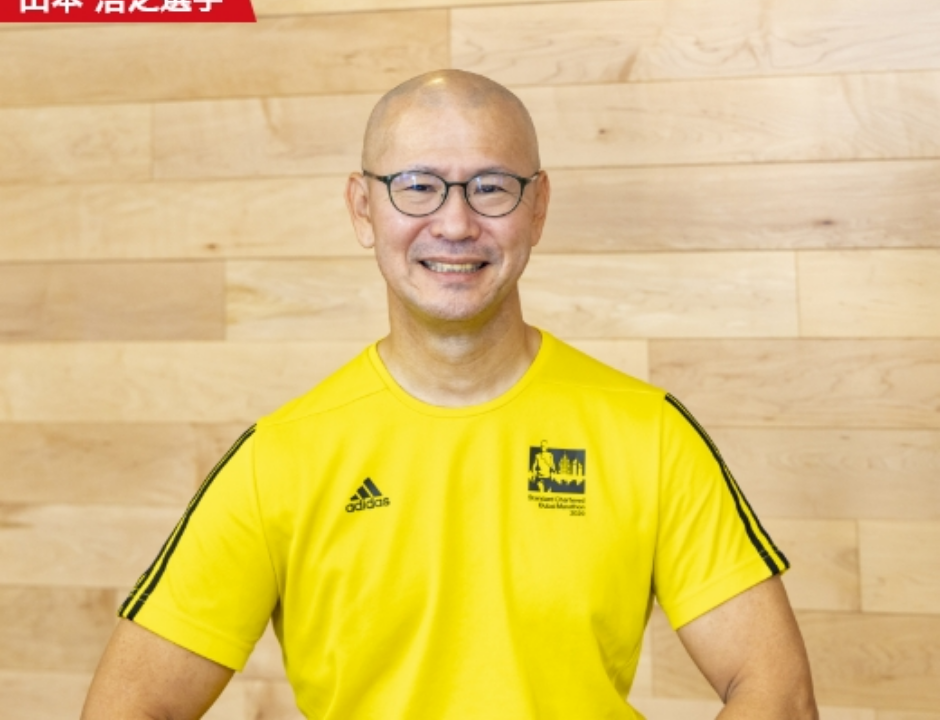
A unique machine that is both lightweight and beautiful
KAKERU’s key strength is its lightweight and aerodynamic design.
Normally when you follow another wheelchair racer, they block some of the wind for you, so wind resistance falls by around 20% to 30%. When you follow the KAKERU, however, it feels like you are racing out front on your own. I believe the KAKERU enables riders to maximize their innate strength. While its performance cannot be overlooked, its design is also extremely cool. In fact, when I give lectures and meet children at schools, they often say how cool the wheelchair looks. I feel immense gratitude to the development team who created this machine for us to compete in. I hope to repay them with great race results.
